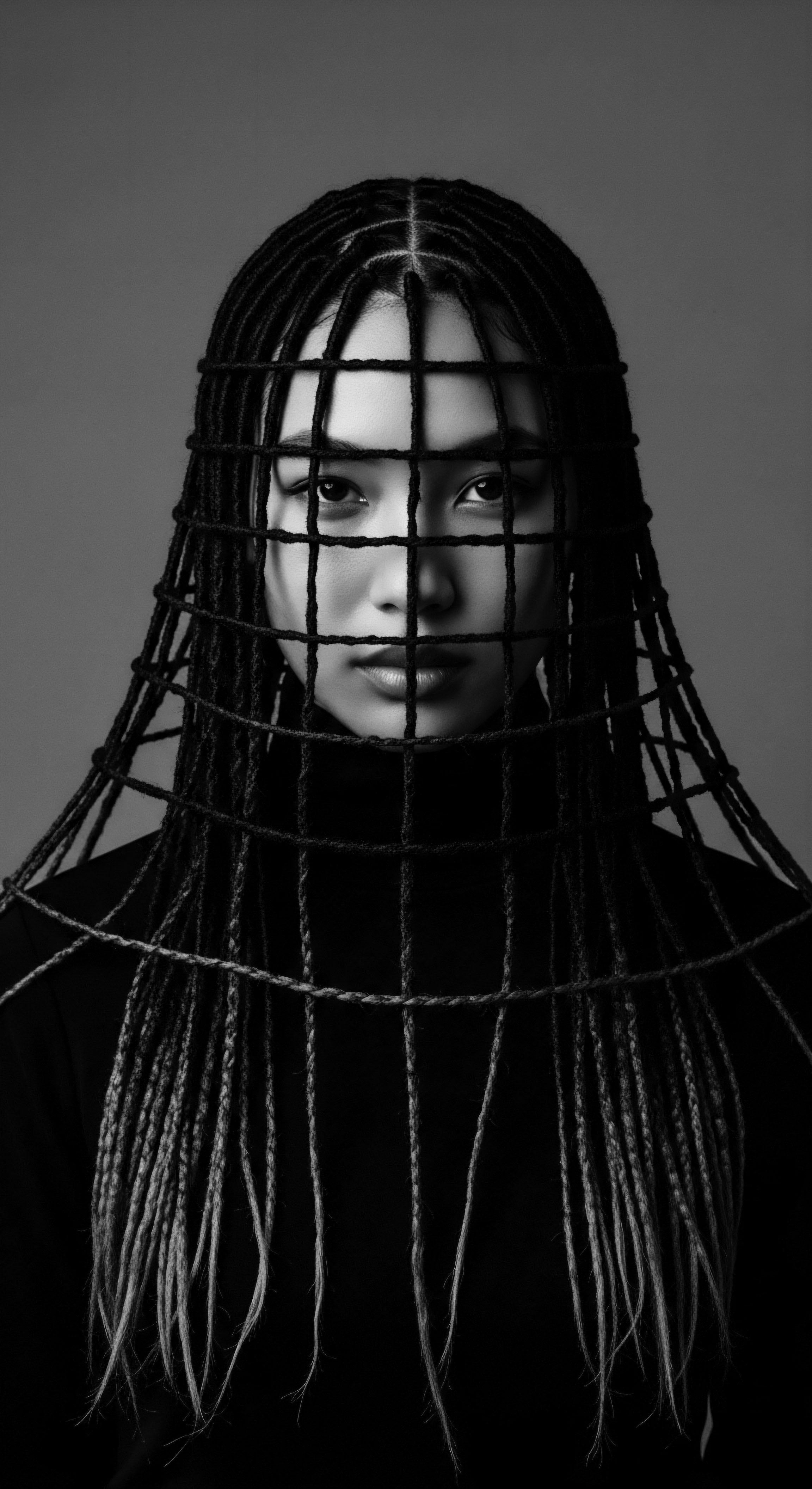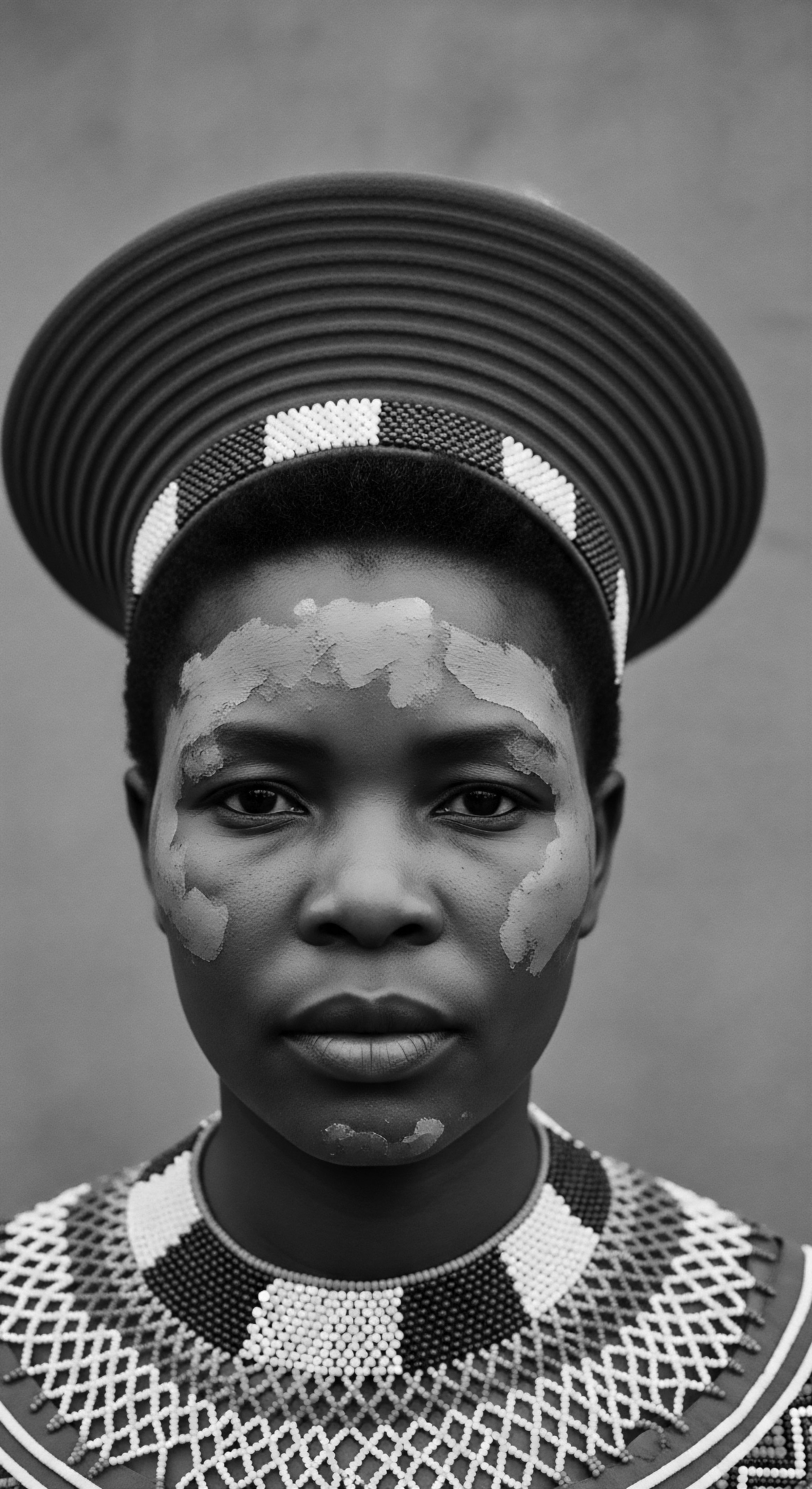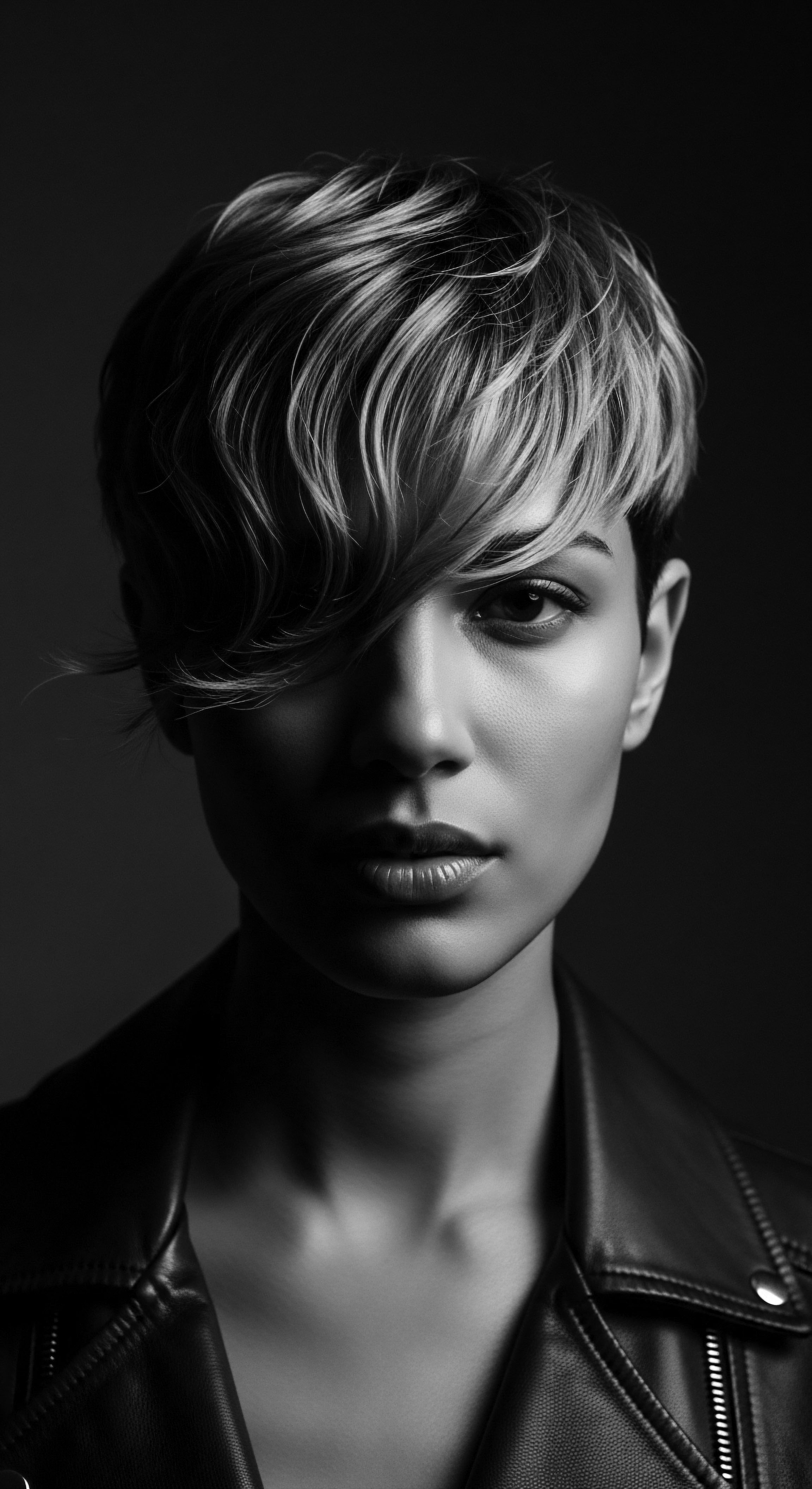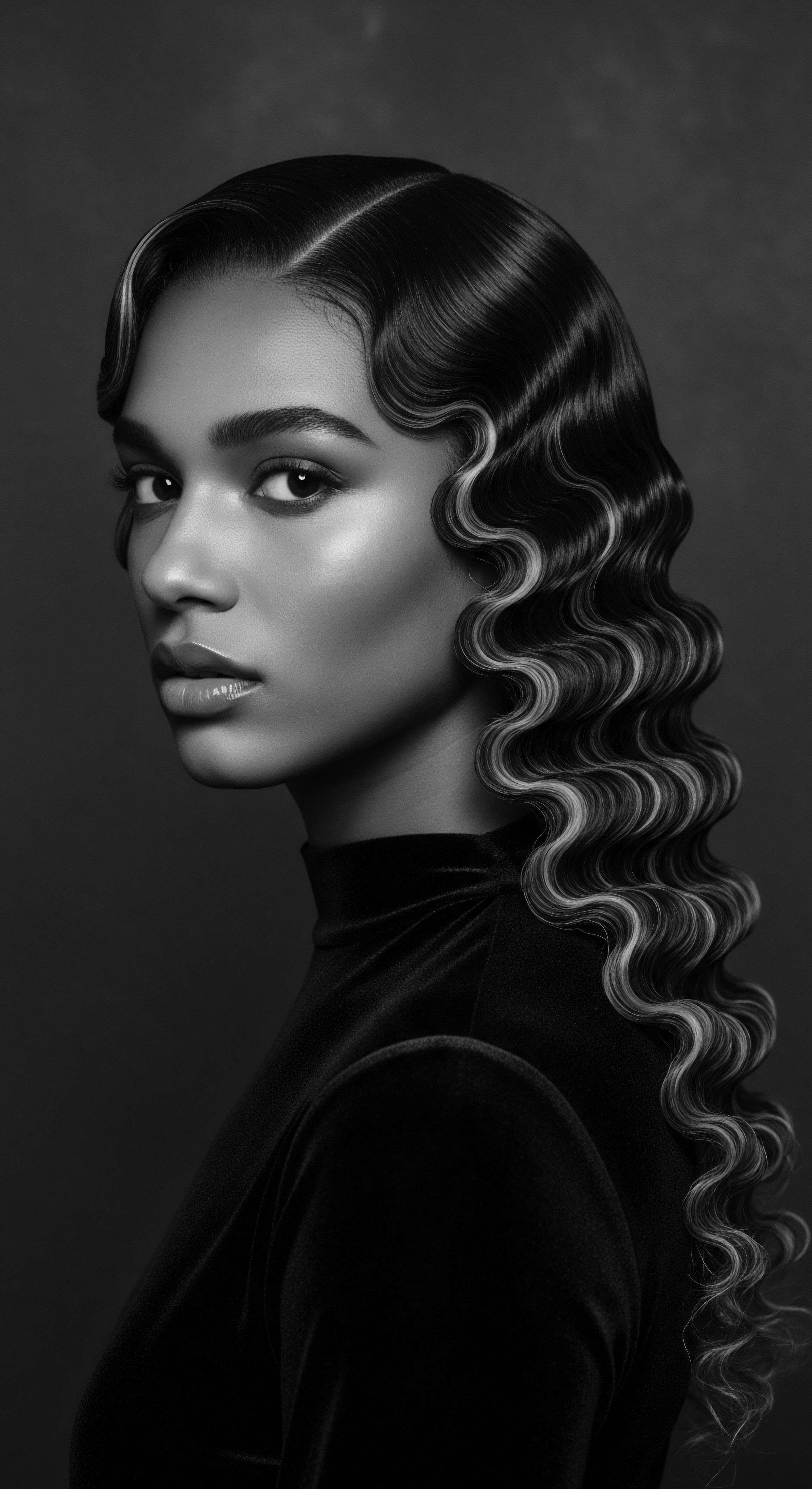
Roots
Consider, for a moment, the whisper of the wind through ancient Saharan grasses, or the gentle caress of a tropical breeze carrying the scent of rain. These elemental forces, present at the dawn of human experience, shaped not only landscapes but also the very strands adorning our heads. Our hair, especially that which coils and kinks with resilient beauty, holds within its very structure a memory of these early environments and the wisdom cultivated to thrive within them.
To truly grasp why textured hair thirsts for moisture, why it asks for deliberate, conscious care, we must listen to the echoes from the source, tracing its journey back to the sun-drenched savannas and the intimate routines of our forebears. It is a story written not just in the spiral of a strand, but in the collective legacy of survival, adaptation, and an enduring connection to the earth’s bounty.

Anatomy of the Ancestral Strand
The remarkable architecture of textured hair, with its elliptical or flattened cross-section and its characteristic helical twists, represents a marvel of natural engineering. This distinct shape means the cuticle layers, which act as the hair’s protective outer shield, do not lie as flat as they do on straighter strands. Instead, these lifted cuticles present a greater surface area to the air, making it simpler for the hair’s inherent moisture to escape into the surrounding environment. Furthermore, the very curvature of the follicle, which dictates the curl pattern, restricts the natural oils, known as sebum, produced by the scalp’s sebaceous glands, from smoothly traveling down the entire length of the hair shaft.
This journey, so straightforward for straight hair, becomes a winding path for coils, leaving the ends particularly susceptible to dryness. This inherent biological design, an adaptation that served protective purposes against intense sun exposure, contributes to the thirst observed in many textured hair types.
The curved structure of textured hair, an ancient adaptation, inherently limits moisture retention along its length.

How Does Hair Structure Affect Moisture Retention Historically?
For early humans in equatorial Africa, hair that coiled tightly was a biological shield. This architecture created a natural air buffer, mitigating the sun’s intense radiative heat and minimizing the need for constant sweating to maintain cool temperatures. While this adaptation offered protection from the elements, it concurrently influenced the hair’s moisture dynamics. The environment itself, often humid, offered a constant source of ambient water, yet the very structure meant that water could also depart rapidly from the hair’s surface.
Traditional practices, therefore, arose from an intuitive understanding of this delicate balance, favoring methods and substances that assisted the hair in retaining its vital hydration, counteracting the swift evaporation. Early communities learned to work with their hair’s natural inclination, selecting care practices that sustained its health within specific climates.

Classifying the Coil’s Continuum
Modern hair typing systems, such as the Andre Walker system, categorize textured hair with numbers and letters, often placing tightly coiled hair (Type 4) at the “bottom” of a hierarchy that implicitly favors straighter, looser textures. This system, while sometimes employed for product recommendations, carries a controversial past. Earlier hair typing attempts, dating back to the early 20th century, were regrettably linked to racist ideologies, serving to determine a person’s perceived proximity to whiteness based on their hair texture. This historical baggage underscores how even seemingly neutral classification tools can bear the weight of colonial legacies, shaping perceptions of beauty and inherent hair needs.

What Ancestral Terms Described Hair Textures and Needs?
Long before modern dermatological classifications, African societies possessed their own intricate systems for recognizing and naming hair types. These naming conventions were not merely about appearance; they were often tied to social status, tribal identity, age, and spiritual significance. The terms used within these communities often spoke to the hair’s behavior, its texture, and implicitly, its moisture requirements. For instance, in some West African cultures, descriptions might have distinguished between hair that was naturally ‘soft’ or ‘hard,’ referring to its pliability and, by extension, its moisture content.
These indigenous lexicons reflected a practical, lived understanding of hair biology within its cultural and environmental context, guiding collective wisdom on appropriate care methods. This rich vocabulary affirmed the diversity of hair within a community, celebrating each variation rather than ranking it.
Here are a few terms and their general implications from historical contexts:
- Irun Kiko ❉ A Yoruba term, meaning “hair threading,” which describes a protective styling method that helped stretch and protect hair, inherently preserving moisture and preventing breakage.
- Duku / Doek ❉ Terms for headwraps in various African regions, like Ghana and Namibia, which not only conveyed identity but also served to protect hair from drying elements.
- Nkuto ❉ The local Ghanaian word for Shea Butter, a substance recognized for its ability to moisturize and protect hair and skin from sun and wind, passed down through generations.

Cycles of Growth and Environmental Rhythms
The hair’s life cycle – its anagen (growth), catagen (transition), and telogen (resting) phases – is universal, yet environmental and nutritional factors have always played a role in its health and perceived moisture. In the ancestral homelands of many textured hair lineages, warm, often humid climates were common. While this humidity could assist in retaining some moisture, the intense sun and occasional dry, dusty winds also posed a challenge, accelerating water loss from exposed strands. This delicate balance demanded responsive care.
Historically, dietary practices centered on nutrient-dense, locally sourced foods would have provided the internal building blocks for healthy hair growth, contributing to its vitality and its natural ability to hold hydration. The connection between what was consumed and how hair thrived was an intuitive understanding, passed down through generations.
| Climate Zone Equatorial/Tropical (High Humidity, Intense Sun) |
| General Hair Characteristics Tightly coiled, dense appearance, robust against UV radiation. |
| Historical Moisture Challenges Rapid moisture evaporation due to high surface area; heat stress. |
| Ancestral Adaptations/Practices Protective styling (braids, wraps), regular application of plant-based oils and butters (e.g. shea butter). |
| Climate Zone Arid/Desert (Low Humidity, Dry Winds) |
| General Hair Characteristics Often coarse, resilient, prone to significant dryness. |
| Historical Moisture Challenges Extreme water loss, brittleness, breakage from wind. |
| Ancestral Adaptations/Practices Rich animal fats, heavy plant butters (e.g. argan oil in Morocco), communal oiling rituals. |
| Climate Zone Temperate (Varied Humidity, Seasonal Changes) |
| General Hair Characteristics Diverse textures, responding to seasonal shifts. |
| Historical Moisture Challenges Seasonal dryness (winter), humidity-induced frizz (summer). |
| Ancestral Adaptations/Practices Seasonal adjustments to oiling routines, use of specific herbs and rinses. |
| Climate Zone Ancestral communities developed care routines that harmonized with their local environments, understanding the inherent need for moisture in coiled hair. |

Ritual
The journey of textured hair care, from the ancient communal gatherings to the quiet, personal moments of modern regimens, forms a living testament to heritage. It is a story told through hands that have braided, twisted, and smoothed strands across centuries, each movement a continuation of practices born from necessity, artistry, and a deep respect for the hair’s intrinsic needs. The question of moisture, for coiled and curly hair, found its first answers in these time-honored rituals, where protection and replenishment became sacred acts, passed from elder to child. These practices, far from being mere styling choices, were intricate systems of preservation, safeguarding the hair’s delicate structure against drying elements and physical stress.

Protective Styling as Preservation
The concept of protective styling, so common today, finds its deepest roots in ancestral practices designed to shield hair from the environment and minimize moisture loss. Styles such as Cornrows, Braids, and Twists were not simply decorative; they were ingenious methods of encapsulation, tucking away delicate ends and reducing exposure to sun, wind, and daily manipulation. These styles provided a physical barrier, allowing natural oils to accumulate along the hair shaft and preventing water from evaporating too quickly. In West African societies, these intricate styles served as complex social markers, indicating age, marital status, tribal affiliation, and even spiritual beliefs.
The time-intensive nature of braiding, often a communal activity, meant that these styles were meant to endure, providing weeks of respite for the hair and scalp. This prolonged period without daily detangling or styling contributed significantly to the hair’s ability to retain hydration and prevent breakage.

How Did Ancient Hairstyles Preserve Hair’s Natural Moisture?
Consider the historical example of Rice Farmers in West Africa. During the transatlantic slave trade, when forced displacement severed connections to their ancestral lands and traditional resources, some women braided rice seeds into their hair as a method of survival, allowing them to carry sustenance for new beginnings. This seemingly simple act highlights a more profound knowledge ❉ the hair was already a secure, protective environment for delicate items, a testament to how effectively these styles sealed and shielded. The tight, segmented nature of braids and cornrows prevented individual strands from rubbing against each other, a common source of friction and moisture loss.
The hair, once styled, required less daily intervention, allowing the natural sebum to distribute and maintain a consistent level of hydration, a silent, ongoing ritual of nourishment. This method of care was intuitive, born from direct observation of hair behavior and environmental conditions.

Natural Definition and Traditional Touch
Defining curls and coils using natural substances and skilled hand movements is a practice with a long heritage. Before commercial products, ancestral communities relied on the bounty of their lands to enhance the hair’s natural patterns. Oils, butters, and various plant extracts were applied with specific techniques, encouraging the coils to clump and hold their shape, thereby reducing frizz and creating a smooth surface that better held onto moisture. This was often done in tandem with gentle detangling, ensuring that hair was free from knots that could impede moisture distribution or lead to breakage.
One common ancestral approach involved applying warmed natural oils or butters to sections of hair, then finger-coiling or twisting the damp strands. This process not only aided in creating a defined pattern but also sealed in the water used during cleansing or rinsing, offering sustained moisture. Such methods demonstrate a deep practical knowledge of emollients and humectants, long before these terms entered scientific lexicon.

Head Coverings as Hair’s Shield
The practice of covering the head, particularly for women of African descent, holds a profound historical context, moving beyond mere fashion to become a vital act of hair preservation and cultural affirmation. Headwraps, Turbans, and Bonnets have served for centuries as guardians of textured hair, especially during rest. In pre-colonial Africa, these coverings could signify wealth, social status, or marital state. As African people were forcibly displaced during the transatlantic slave trade, head coverings took on new dimensions.
While they were sometimes weaponized as tools of subjugation, used to visibly mark enslaved Black women as subservient, they also became covert means of communication and, significantly, a shield for hair. Facing arduous labor and harsh environmental conditions with limited access to traditional care methods, Black women used cloths to protect their hair from dirt, sun, and the elements, preserving its moisture and preventing tangling. This practice continued post-slavery, evolving into a widely recognized method for hair preservation.
Head coverings, from ancient headwraps to modern bonnets, symbolize centuries of hair preservation, initially serving as essential shields against harsh environments and later as acts of resilience.
The principle behind these protective coverings is straightforward yet effective ❉ they reduce friction between hair and coarser fabrics like cotton pillowcases, which can absorb moisture and create frizz. Silk and satin linings, though a later refinement, echo the historical intent of providing a smooth, less absorbent surface for the hair to rest upon. This practice, deeply ingrained in the heritage of Black hair care, speaks to an enduring understanding that external protection is central to maintaining the hair’s internal hydration.

Tools of Care from Ancient Hands
The tools employed in historical textured hair care were crafted with an intuitive understanding of the hair’s delicate nature. Combs fashioned from wood or bone, and sometimes ingeniously created from available materials like sheep fleece carding tools during enslavement, possessed wide teeth. This design reduced snagging and breakage, allowing for gentle detangling, which is especially important for tightly coiled strands that are prone to knotting and snapping, particularly when wet. The careful manipulation of hair, minimizing damage, directly supports its ability to retain moisture.
Every broken strand represents a compromise in the hair’s integrity, an opening for hydration to escape. Thus, the gentle nature of these traditional tools served as a silent ally in the ongoing quest for moisturized, healthy hair.

Relay
The legacy of textured hair care travels across generations, a continuous relay of wisdom, adaptation, and affirmation. What began as ancestral ingenuity in response to elemental realities now stands as a deeply rooted philosophy of well-being, informing contemporary practices with lessons from the past. The moisture needs of textured hair, so central to its vitality, are understood not as a deficiency, but as a unique characteristic that has shaped entire cultural traditions of care. This understanding bridges the chasm between ancient practices and modern science, revealing how the knowledge of our forebears often finds validation in today’s laboratories, and how the call for hydration is a consistent refrain across time.

Regimens Rooted in Ancestral Wisdom
Building a personalized textured hair regimen today finds its blueprint in the time-honored practices of ancestral communities. These practices were seldom rigid, but rather responsive, adapting to individual hair differences, seasonal changes, and available natural resources. They emphasized listening to the hair, observing its behavior, and providing what it genuinely needed for sustained health.
This often meant a less frequent cleansing schedule than for other hair types, recognizing that over-washing could strip the hair of its natural protective oils, exacerbating its inherent dryness. The communal aspect of hair care in many African societies meant that knowledge of effective regimens was a shared wealth, passed down through direct demonstration and oral histories, creating a collective wisdom that informed individual routines.
The careful layering of moisturizing and sealing agents, a staple in many modern textured hair routines, echoes ancient practices. For instance, the use of water-based preparations followed by rich oils or butters for sealing has been observed in various traditional settings. This approach ensures that water, the ultimate hydrator, reaches the hair fiber, while the subsequent application of lipids helps to slow its evaporation.

How do Ancestral Care Steps Influence Modern Product Application?
The modern emphasis on applying liquid first, then cream, then oil (LCO) or liquid, then oil, then cream (LOC) methods for moisture retention in textured hair directly mirrors ancestral knowledge. Indigenous communities in West Africa, for example, instinctively used layered applications of water, plant juices, and rich butters like Shea Butter to hydrate and then seal the hair. This pre-scientific understanding of emollients and occlusives, recognizing that water must be introduced before being sealed in, is a profound historical context for current product use. The traditional “oil bath” cleansing methods in some West African cultures, where a blend of heated oils and sometimes honey or egg was used to wash and condition hair, also speaks to this deep ancestral appreciation for nourishing lipids and minimizing moisture stripping.

The Nighttime Shield of Heritage
The practice of protecting hair at night, now commonly achieved with silk or satin bonnets, is a direct continuation of ancestral traditions that recognized the nocturnal hours as a vital period for hair preservation. Long before the advent of modern textiles, various African and diasporic communities used natural fabrics, often artfully wrapped, to cover and shield hair during sleep. This served multiple purposes ❉ maintaining styled hair, preventing tangles, and crucially, preserving moisture.
The friction against rough sleeping surfaces could abrade the delicate cuticle layer, leading to moisture loss and breakage. Head coverings provided a smooth barrier, safeguarding the hair’s hydration and structural integrity.
Historically, headwraps and turbans, often made from cotton or other available cloths, were ubiquitous across many African cultures. During the Middle Passage and enslavement, these coverings became a critical means for African women to protect their hair from the harsh conditions of forced labor and unsanitary environments. They were not merely functional; they were a hidden act of defiance and a quiet preservation of dignity and self. The very act of wearing a head covering, even when mandated by oppressive laws in the Americas to differentiate enslaved and free Black women, was subtly transformed into a symbol of resilience and cultural expression, often adorned with symbolic patterns or worn in particular ways.

Ingredients of Enduring Wisdom
The specific moisture needs of textured hair have been historically met with ingredients sourced directly from the earth’s generosity. These ancestral ingredients, still popular today, testify to a long-standing empirical understanding of their properties. Their continued use offers powerful evidence of their efficacy in addressing the hair’s thirst.
- Shea Butter ❉ Derived from the nuts of the shea tree (Vitellaria paradoxa) native to West Africa, Shea Butter (also known as Karité) has been used for centuries to moisturize and protect skin and hair. It contains fatty acids and vitamins that provide deep hydration and help to seal the hair cuticle, reducing water loss. Historical accounts speak of Cleopatra carrying jars of shea butter to protect her skin and hair in arid climates, and its consistent use by African women as a moisturizer and hair pomade.
- Argan Oil ❉ Hailing from the argan tree (Argania spinosa) in Morocco, Argan Oil has been a staple in Berber communities for centuries, revered for its cosmetic and therapeutic properties. Often called “liquid gold,” it is rich in antioxidants and vitamin E, providing intense moisture and strengthening the hair fiber. Its historical application for dry hair speaks volumes to its moisture-retaining qualities.
- Coconut Oil ❉ A ubiquitous ingredient across many tropical regions, Coconut Oil has been used for generations as a hair dressing, providing moisture and a protective barrier. Its ability to penetrate the hair shaft makes it particularly effective for conditioning and reducing protein loss.
- Chebe Powder ❉ Originating from the Basara Arab women of Chad, Chebe Powder, a mix of specific plant extracts, is historically applied as a hair treatment to increase hair thickness and retain moisture, especially between washes. This traditional concoction highlights advanced ancestral understanding of moisture sealing and length retention.

What Historical Evidence Supports the Moisture-Retention Properties of Traditional Ingredients?
A compelling demonstration of ancestral understanding comes from the consistent, generational use of certain natural ingredients. For instance, the women of Ghana, as documented by Suzzy Korsah (a quality control expert at Global Mamas in Cape Coast), have historically used Nkuto (shea butter) for “e v e r y t h i n g” from skin moisturizing to hair pomade. Rose Odoom, overseeing exports in the Global Mamas Accra office, shared that her family kept large jars of shea butter, using it daily after bathing to make hair “very smooth and soft and protect from other sicknesses.” This widespread, sustained application over centuries provides compelling empirical evidence of shea butter’s effectiveness in maintaining hair softness and protecting it, intrinsically linked to its moisture-retaining capabilities. Similarly, the long-standing use of argan oil by Berber communities in Morocco for its cosmetic properties, particularly for hair, speaks to its recognized power in nourishing and strengthening strands against arid conditions.

Problem Solving with Ancestral Remedies
Textured hair’s dryness and propensity for breakage are challenges that ancestral societies addressed with ingenuity and resourcefulness. Remedies for dry scalp, scalp irritation, and breakage were often rooted in available botanicals and natural fats, applied with specific techniques that inherently aimed to restore balance and hydration. These practices represent a collective intelligence, refined over countless generations, on how to keep hair supple and resistant to damage. They highlight a holistic approach, where hair health was viewed as connected to overall well-being and the environment.
For instance, some traditional methods involved warming oils before application, a practice that improves the oil’s ability to coat the hair shaft and potentially assists in moisture penetration. Massaging the scalp with oils, a common ritual, not only stimulated blood flow but also helped distribute natural sebum, mitigating dryness at the source. The limited access to manufactured products during periods of enslavement forced enslaved people to innovate, utilizing substances like bacon grease or animal fats as conditioners, and even cornmeal as a dry shampoo. While these were desperate measures, they underscore the fundamental need to protect and moisturize hair, even under extreme duress, carrying forward an ancestral impulse for hair care.

Reflection
As we close this contemplation of textured hair’s moisture needs through the lens of history and heritage, we find ourselves at a compelling juncture. The whispers of ancestral wisdom, once carried on the wind and through communal practices, now reverberate alongside the precise insights of modern science. What becomes clear is that the fundamental requirements of textured hair – its profound need for moisture – are not a contemporary discovery, but an ancient truth. This truth has guided care traditions for millennia, leading to the development of protective styles, ingenious tools, and a reverence for natural emollients derived from the earth.
The hair, for Black and mixed-race communities, has always been more than a physical attribute; it is a repository of identity, a symbol of resilience, and a living archive of collective memory. Its care is a continuous conversation with the past, an affirmation of self in the present, and a guiding light for the future. Each coil, each kink, each strand, holds within it the story of a heritage that endures, beautiful in its strength and persistent in its demand for deep, loving hydration. To care for textured hair is to honor this profound legacy, to participate in an unbroken lineage of understanding, and to hold the soul of a strand within our hands, a testament to enduring beauty and belonging.

References
- Adeyemi, T. (2020). Hair ❉ A Cultural History from Ancient Times to the Present. London ❉ Thames & Hudson.
- Akintola, F. (2018). The Legacy of African Hair ❉ Identity and Resistance in the Diaspora. New York ❉ University Press.
- Davis, A. (2021). Coiled Beauty ❉ Understanding and Caring for Textured Hair. Oxford ❉ Oxford University Press.
- Diallo, S. (2019). African Botanicals ❉ Traditional Ingredients for Modern Hair Care. Dakar ❉ African Wisdom Publishing.
- Jones, L. (2017). Strands of History ❉ Hair and Identity in African American Culture. Cambridge, MA ❉ Harvard University Press.
- Muhammad, Z. (2023). Hair Anthropology ❉ Tracing the Roots of Texture and Care. Chicago ❉ University of Chicago Press.
- Njoku, C. (2022). The Science of Textured Hair ❉ A Dermatological and Cultural Perspective. London ❉ Routledge.
- Okoro, N. (2020). From Root to Crown ❉ A History of Black Hair Care Practices. Atlanta ❉ Black Hair Studies Institute.
- Smith, J. (2019). Protective Styles ❉ An Ancestral Guide to Hair Health and Longevity. New York ❉ Heritage Press.
- Walker, S. (2016). The Cultural Significance of Hair in African Societies. Paris ❉ UNESCO Publishing.
